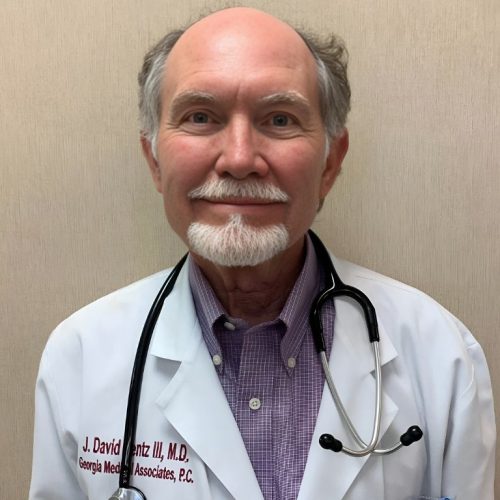Effective treatment for vaping addiction now combines FDA-approved medications like varenicline with digital counseling support, giving you the best chances of success. You’ll find that medication paired with behavioral therapy can increase your odds of quitting by 242%, while programs like EX offer personalized text support that enhances success rates by 40%. Whether you’re 16 or 25, these evidence-based approaches, along with peer support networks, provide your clearest path to becoming vape-free. Let’s investigate your options for lasting recovery.
Understanding Current Treatment Options and Success Rates

While vaping addiction presents significant challenges, recent clinical trials have demonstrated promising treatment options with measurable success rates. The most effective approach combines varenicline (Chantix) with counseling, showing a 51% success rate at 12 weeks and 28% sustained abstinence at 24 weeks. The study shows that varenicline is three times better than placebo for helping young people quit vaping.
You’ll find that managing nicotine withdrawal symptoms is vital for successful treatment. Options include FDA-approved medications like varenicline and bupropion, along with nicotine replacement therapies such as patches and gum. Demographics-specific considerations show that teens and young adults (16-25) respond best to treatment, which is particularly important given the 25% vaping rates in this cohort. Research indicates that quitting vaping leads to improved mental health in 90% of young people who successfully quit. When you combine medication with weekly counseling and digital support, you’re tripling your chances of success compared to using just one method alone. Support is readily available through 1-800-QUIT-NOW hotlines and the National Cancer Institute’s chat service for those seeking immediate assistance.
The Role of Behavioral Support and Counseling Programs
Because behavioral support greatly boosts the effectiveness of vaping cessation treatments, you’ll find it’s an essential component of successful recovery programs. Research shows that combining varenicline with counseling can triple your chances of quitting successfully. Digital counseling approaches have proven particularly effective for young adults aged 16-25, offering convenient, scalable vaping interventions through remote and text-based platforms. The EX Program texts have shown to increase quit success rates by up to 40%.
Behavioral support combined with medication significantly increases your chances of quitting vaping, especially through digital platforms tailored for younger users.
Studies demonstrate that behavioral support combined with medication increases your odds of sustained abstinence by 242%. Approximately 25 percent of adults aged 18-25 reported using vaping products in 2023, highlighting the critical need for comprehensive support services. Clinical data shows that behavioral treatment alone was surprisingly ineffective without medication support.
Remote counseling services provide personalized support while addressing your specific triggers and cravings.
Text-based programs like “You Got This Day” offer accessible, ongoing motivation that complements your medication treatment.
The evidence clearly supports integrating behavioral counseling into your cessation plan, whether through digital platforms or traditional methods, to optimize your chances of long-term success.
Youth-Focused Strategies for Breaking Vaping Dependency

Young people face unique challenges when quitting vaping, requiring specialized approaches that address their specific needs and social environments. You’ll find comprehensive support through digital platforms like Truth Initiative’s EX Program, which combines nicotine replacement therapies with mobile technology integrations for personalized cessation plans. Recent clinical trials show that varenicline treatment can help youth achieve significantly higher vaping abstinence rates compared to placebo.
Programs like Not On Tobacco® provide targeted cessation support specifically designed for teens aged 13-19. School-based resources offer vital support through health centers and peer mentorship programs, while youth-focused support groups help you navigate social pressures. You can access real-time assistance through text-based programs and mobile apps that track your progress and provide instant motivation. Interactive workshops teach stress management techniques as alternatives to vaping, while gamified platforms make your quitting expedition more engaging.
Community initiatives, including social media challenges and incentive programs, create a supportive environment that reinforces your commitment to becoming vape-free.
Medication-Based Approaches to Vaping Cessation
As medical understanding of vaping addiction continues to evolve, medication-based approaches have emerged as essential tools in the cessation path. Currently, your doctor may prescribe Varenicline (Chantix) off-label for vaping cessation, with prescription guidelines typically starting at 0.5 mg and potentially increasing to 1 mg based on your response.
Medication-assisted treatment offers new hope for vaping cessation, with doctors now prescribing targeted therapies to help break nicotine dependence.
With nearly 12% of Americans still actively smoking, the need for effective cessation treatments extends beyond vaping alone. Cost effectiveness considerations often influence treatment choices, but insurance may cover FDA-approved medications. A significant development in treatment options is expected with FDA submission planned for June 2025.
Cytisinicline, a promising new medication completing Phase 3 trials, could offer you fewer side effects than existing options when it becomes available in late 2026.
Your treatment success rates improve with medical supervision and proper dosing schedules, especially during the critical initial weeks. While managing side effects like nausea or insomnia, you’ll need to maintain open communication with your healthcare provider to adjust treatment as needed.
Building an Effective Support Network for Long-Term Success

Building a powerful support network can greatly amplify your chances of successfully quitting vaping. You’ll find strength in connecting with both digital and in-person resources that provide consistent encouragement and accountability. Consider joining peer-led mentorship programs where experienced individuals guide you through common challenges and relapse triggers. Research shows that using EX Program text support can boost your chances of successfully quitting by up to 40%. Social support networks have proven to be the most utilized quit method among young adults. According to emerging research, text-based interventions are particularly effective for teenagers and young adults between 13-24 years old.
Community-based workshops offer valuable opportunities to learn coping strategies while building relationships with others on similar paths. You can supplement these in-person connections with digital tools like the EX Program or text-based support systems that provide real-time motivation. Social media communities and forums also create safe spaces to share experiences and seek advice. Remember, professional counseling can work alongside your peer support network, offering evidence-based strategies customized to your specific needs and circumstances.
Frequently Asked Questions
How Long Do Withdrawal Symptoms Typically Last After Quitting Vaping?
You’ll experience most intense physical withdrawal symptoms during the initial 3-5 days after quitting vaping.
While peak nicotine cravings typically subside within 10 days, psychological symptoms can persist for several weeks. Your withdrawal duration varies based on your vaping history and chosen cessation strategies.
Most people find their symptoms greatly improve by the one-month mark, though occasional cravings may occur during stressful situations for up to 6 months.
Can I Switch to Nicotine Gum or Patches While Trying to Quit?
Yes, you can use nicotine gum or patches as part of your vaping cessation methods. These nicotine replacement strategies are safe and clinically proven to help manage withdrawal symptoms.
Research shows they’re most effective when combined with behavioral support, with success rates of 50-70% when properly used. You’ll want to choose the right format that works for you – patches provide steady nicotine delivery, while gum offers more immediate relief when cravings hit.
What Are the Financial Costs Associated With Vaping Cessation Programs?
Many affordable vaping cessation programs are actually free or low-cost. You’ll find cost-effective treatment options through resources like Kick It California and the EX Program, which offer free text support, apps, and online communities.
Your employer may cover supplementary services, potentially saving you $950-1,929 annually in healthcare costs. Even paid programs typically show a strong return on investment, with participants experiencing 40% higher quitting success rates compared to trying alone.
Does Insurance Cover Vaping Addiction Treatment and Medication Options?
Yes, your insurance likely covers vaping addiction treatment. Medicare and Medicaid provide extensive coverage for FDA-approved nicotine replacement therapies, including patches, gum, and inhalers.
You’ll also have access to behavioral counseling options, with most plans covering at least four sessions annually. If you have private insurance or an ACA-compliant plan, you’re typically covered for cessation medications and counseling, though specific coverage details may vary by provider.
How Can I Help a Friend Who Denies Having a Vaping Addiction?
When helping a friend who denies their vaping addiction, it’s vital to offer non-judgmental support and avoid confrontational approaches. Start by expressing your concerns calmly, using “I” statements like “I’ve noticed” or “I care about.”
Listen actively and investigate their motivations for change without pushing too hard. Share factual information about vaping risks when they’re receptive, and let them know you’re available to help whenever they’re ready to discuss it.










